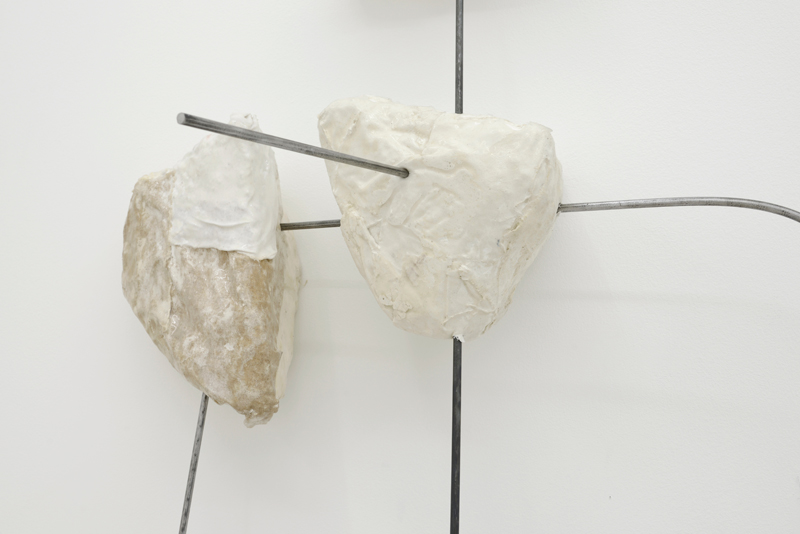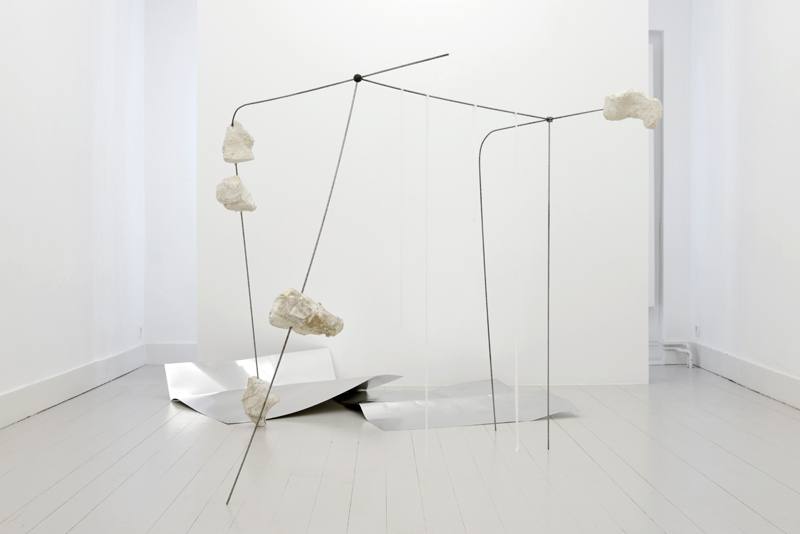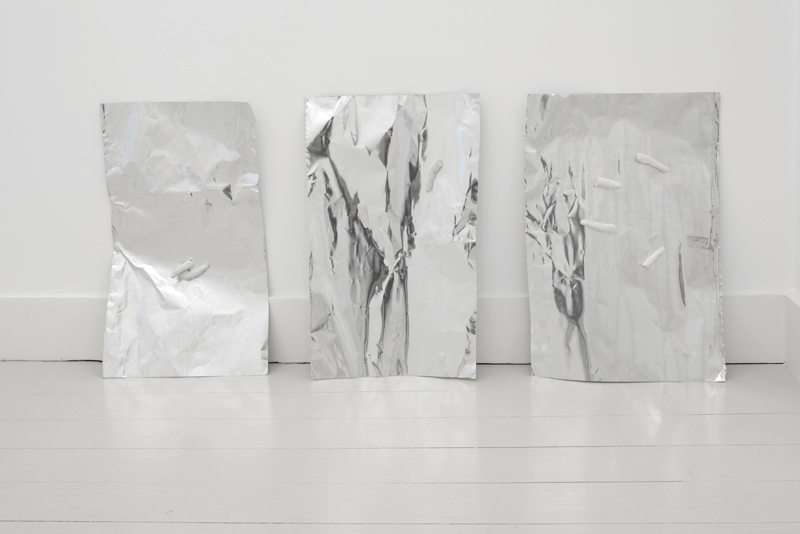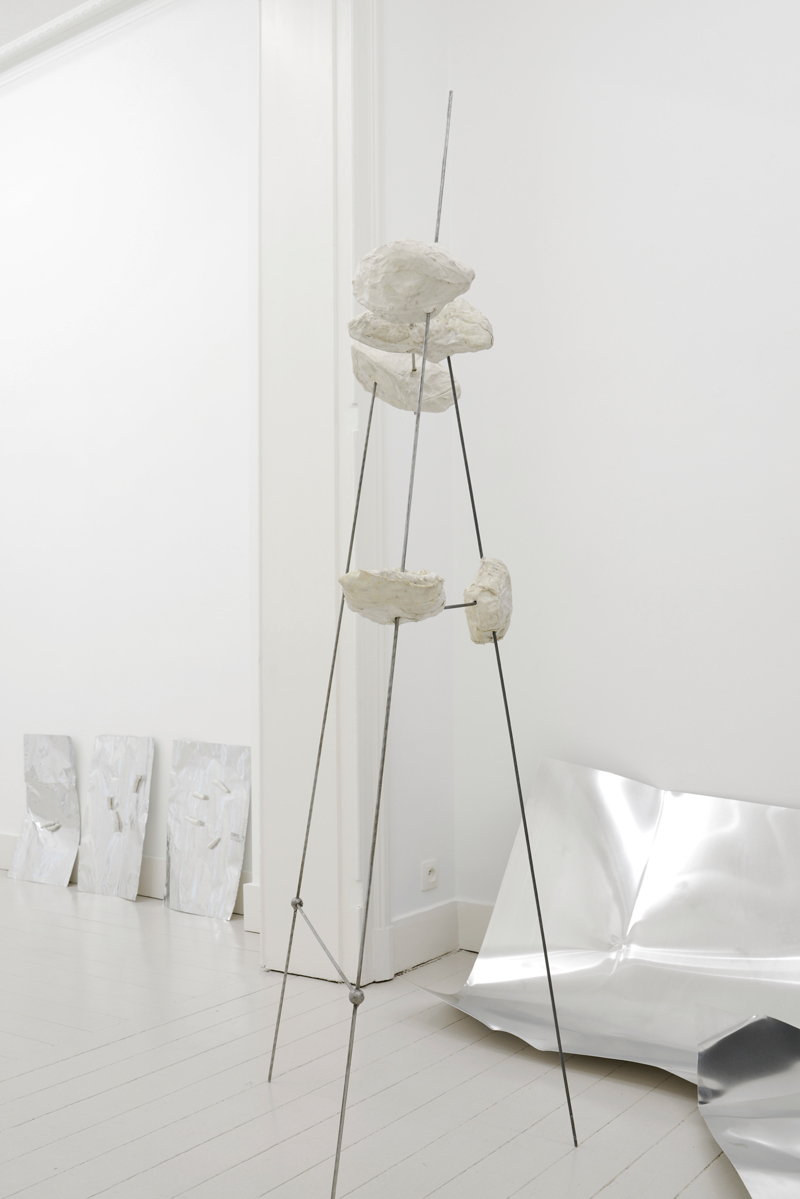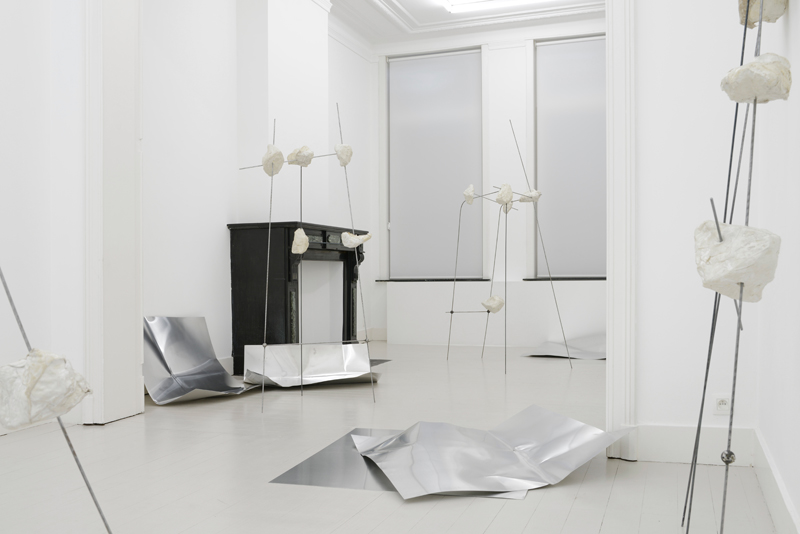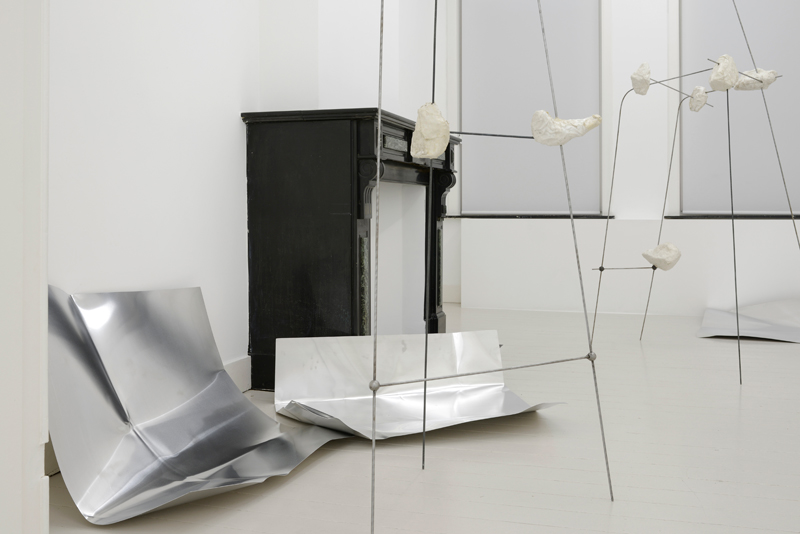
Airbags
MOT INTERNATIONAL, Brussels
4 June – 31 July 2015
The first pictures of the earth and the moon triggered a global awareness of the unique and fragile nature of our planet. The Apollo program promoted the dissemination of innovations in the field of material science and engineering and promoted advances in computers and technology.
Vanessa Safavi’s exhibition Airbags was inspired initially by NASA tests and simulations of crashes, accidents or gravity tests used to prepare astronauts for space missions. A decrease in bone density and muscle mass, balance disorders, sleep disturbances, cardiovascular irregularities and immune system depression are common symptoms experienced by astronauts during a mission. Intense preparations are required in order to reduce the syndromes. The title Airbags evokes impact, when the physicality of the matter meets the human body. At the very moment or the very limit when the body transcends to a different sphere, it enters a process that Lygia Clark located as “where the frontier between body and object is broken”.
Safavi is interested in the alienation that we have with our bodies. She believes that this alienation exists in the hybridity between the tool, the unconscious desiring machine and hyperreal object. The exhibition developed her research on the interpretation of the body as a physical form more than social or cultural entity. More generally, she is interested in the way our modern cultures colonize nature. When the space mission sent advance technology satellites and space probes to observe and collect data from space, it was a form of colonization. But more than that, developing intelligent machines to increase this form of colonization provoked political fears and human curiosity. This phenomena of hybridization prompted Safavi to develop a new series of sculptures made from steel, silicones and bandages. The works attempt to be a synthesis between the human body, the satellite and prosthetic devices. Like all the pieces in the show, they endure the mutability between nature and technology. Fragile, delicate, and aerial, their physicality stands between floating satellites and medical devices irregularly shaped, with anthropomorphic banded shapes covered by silicones—hybrids of human organs and asteroids.



